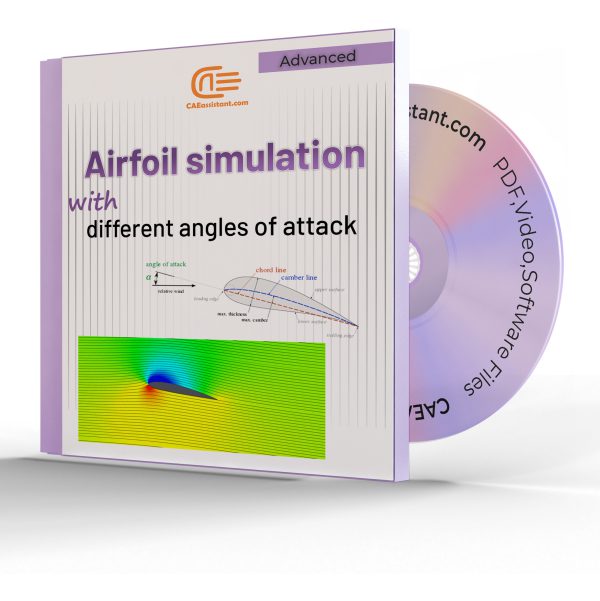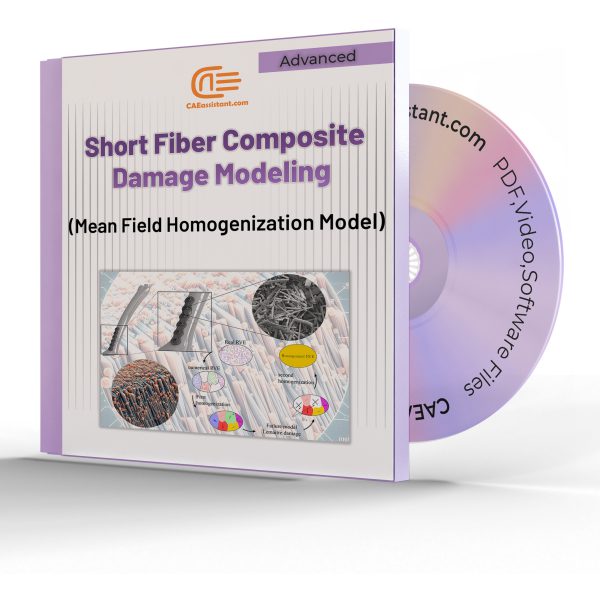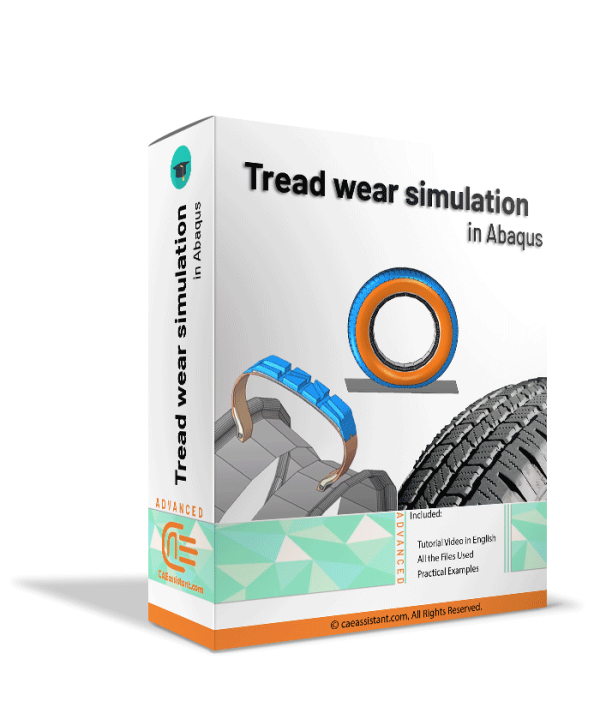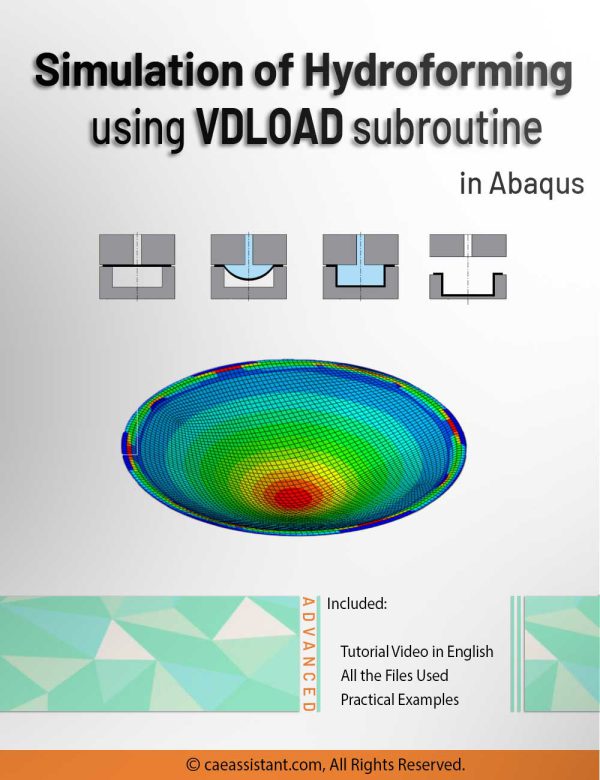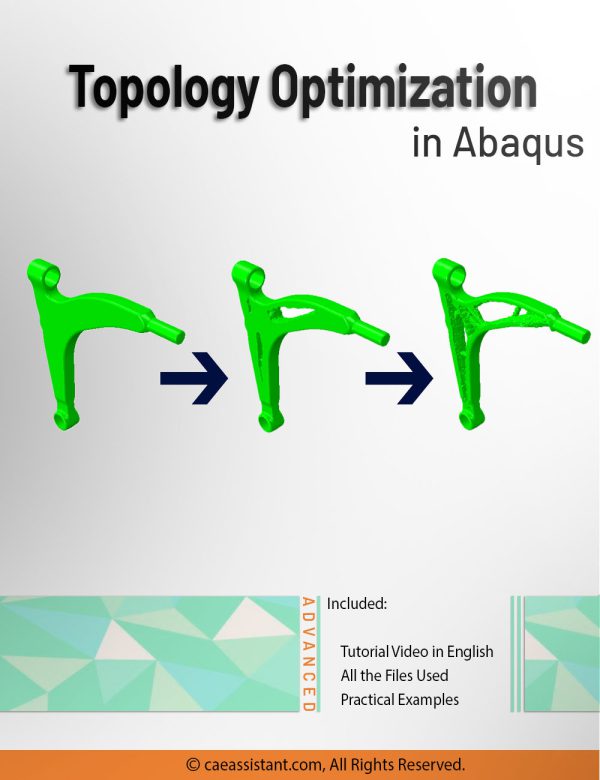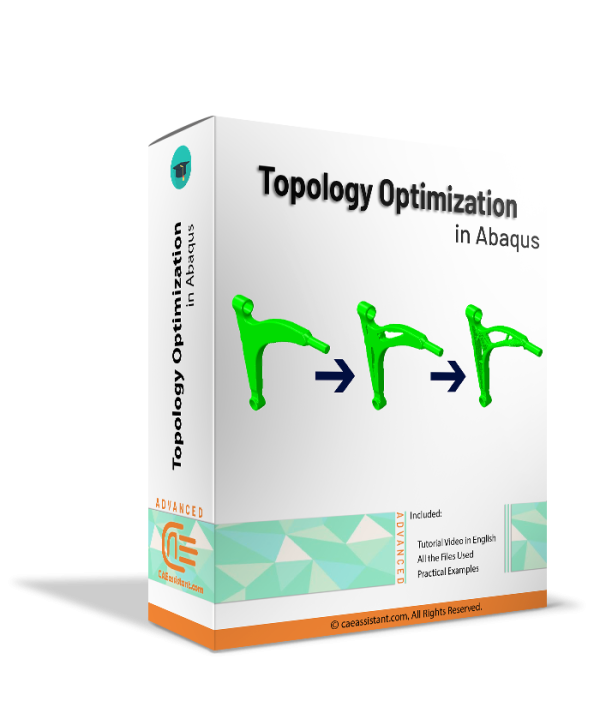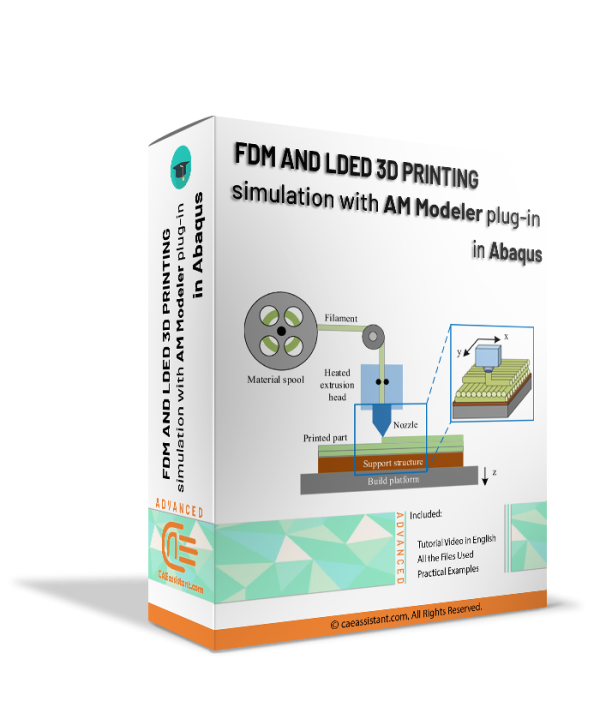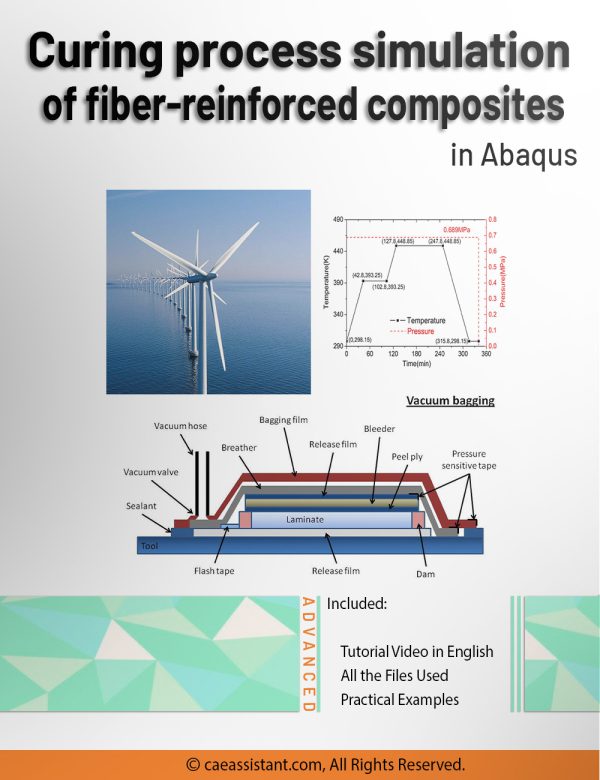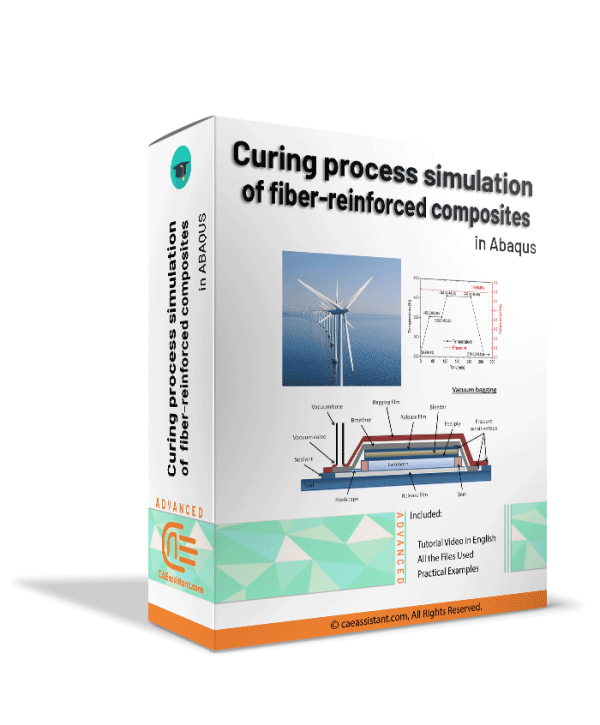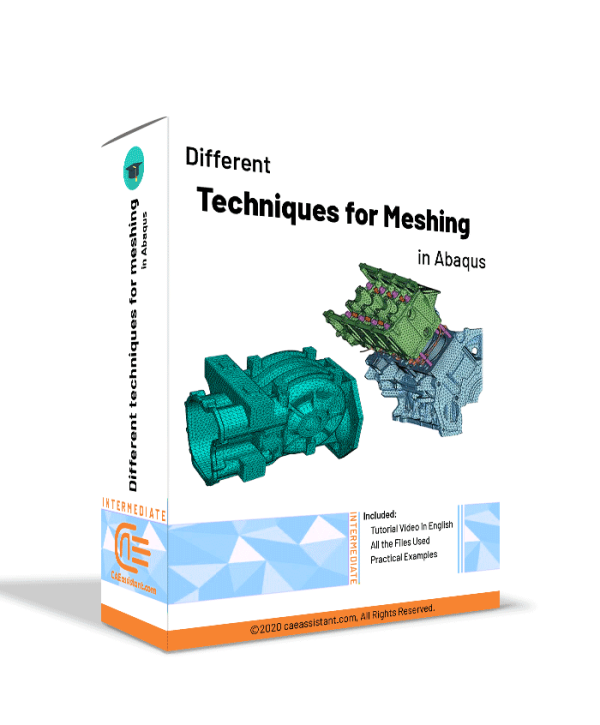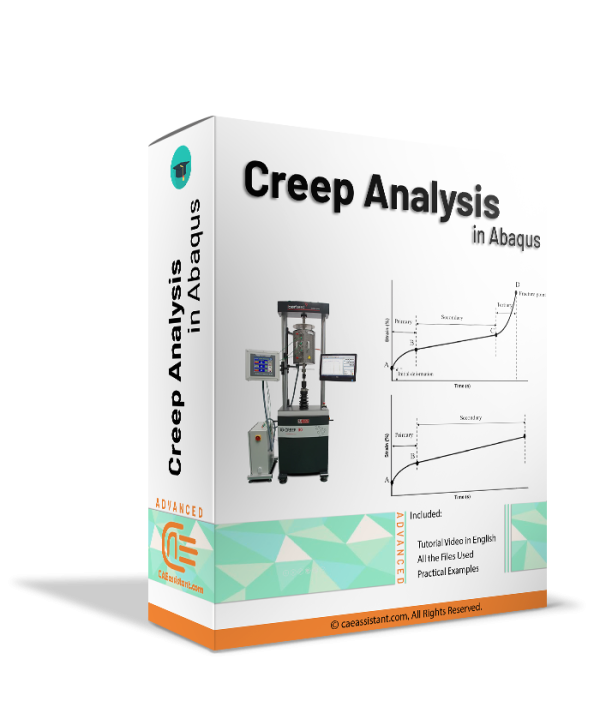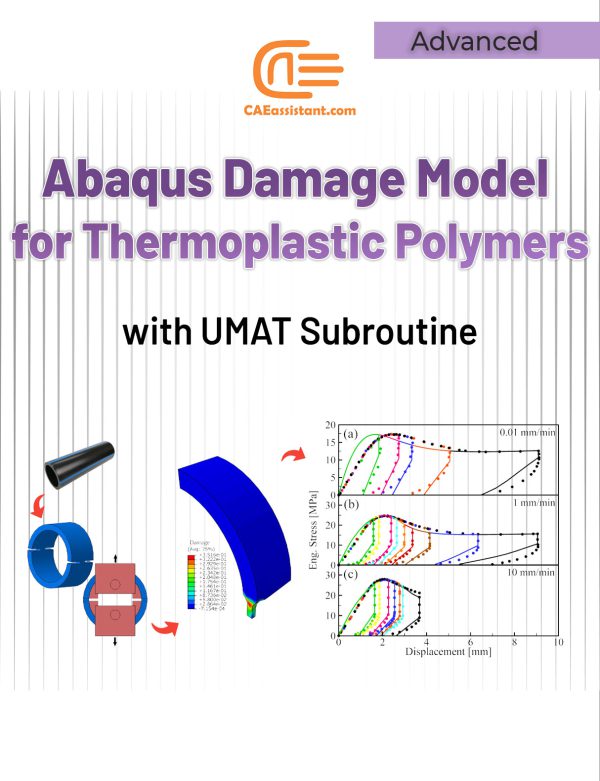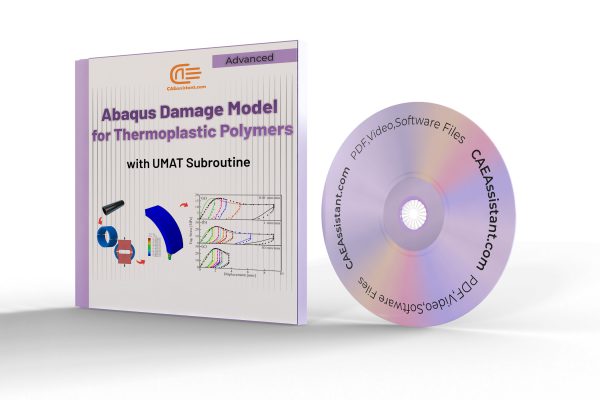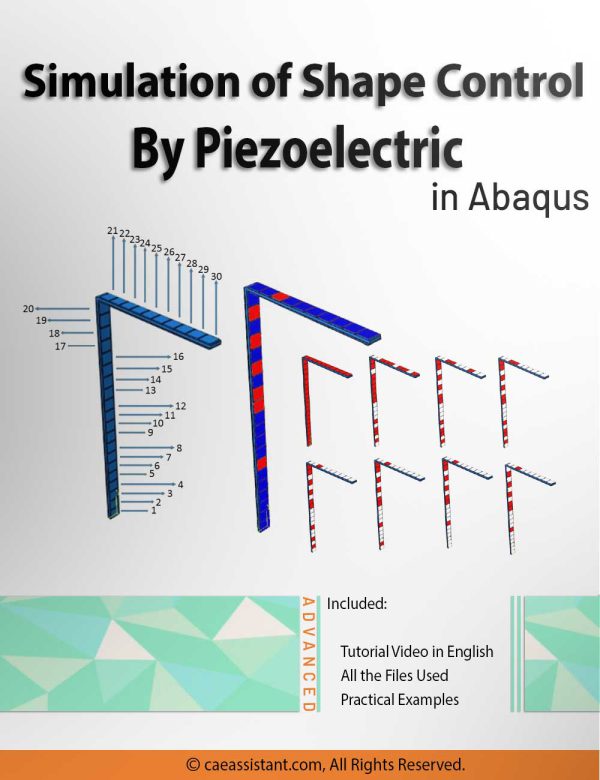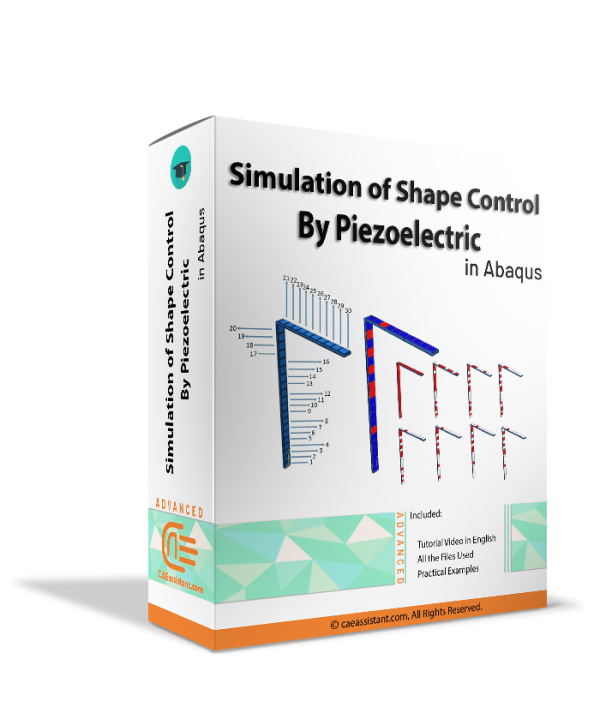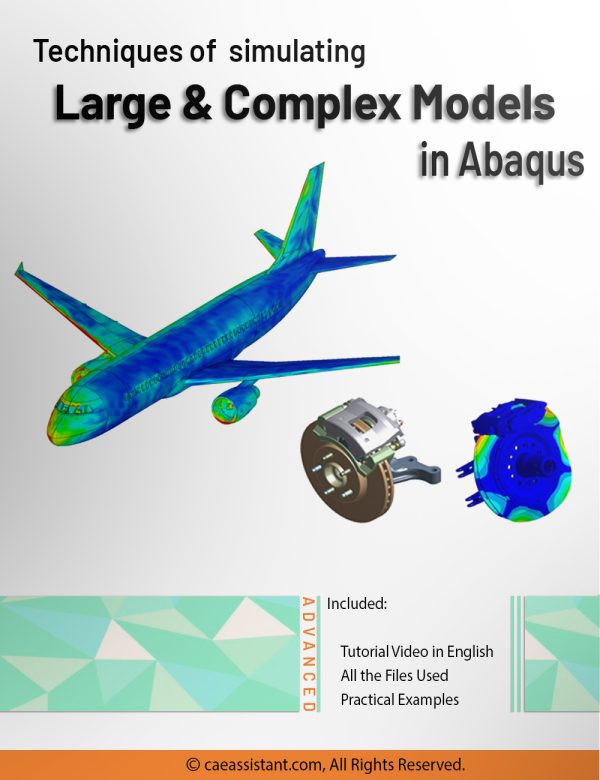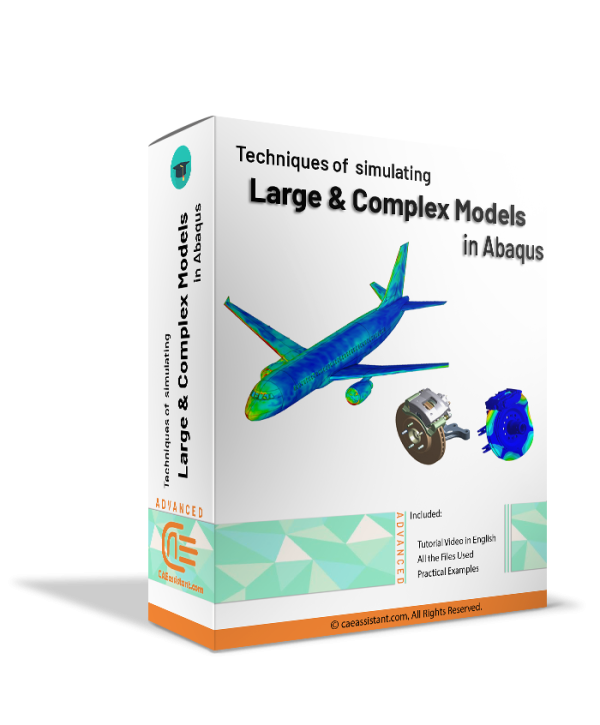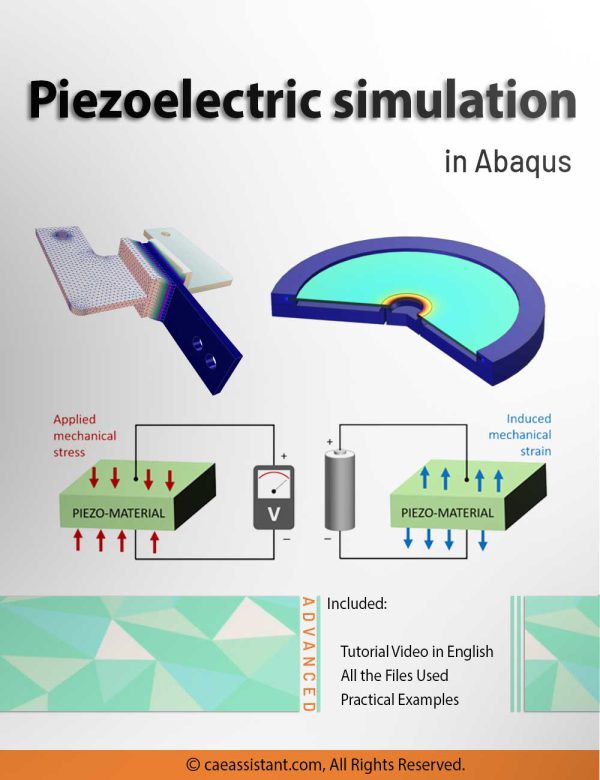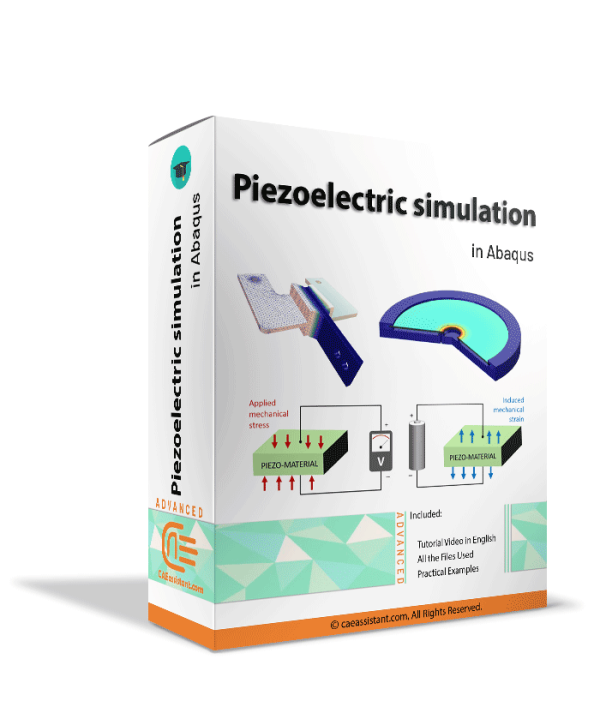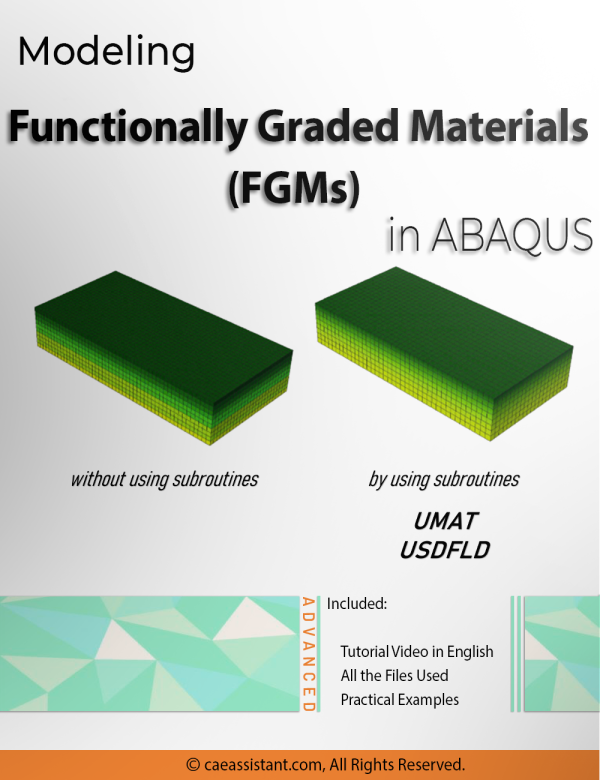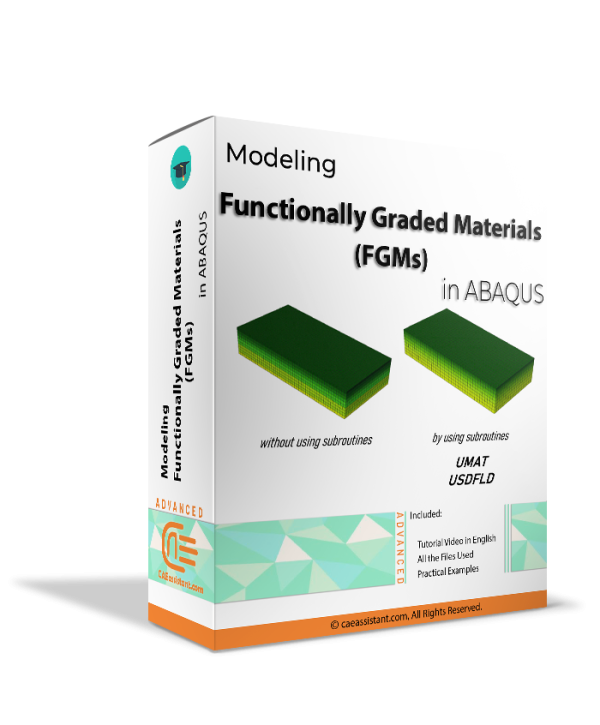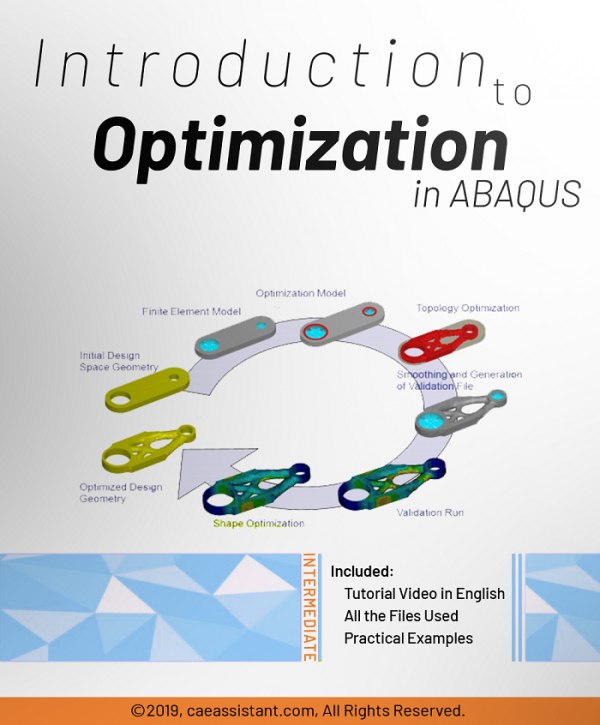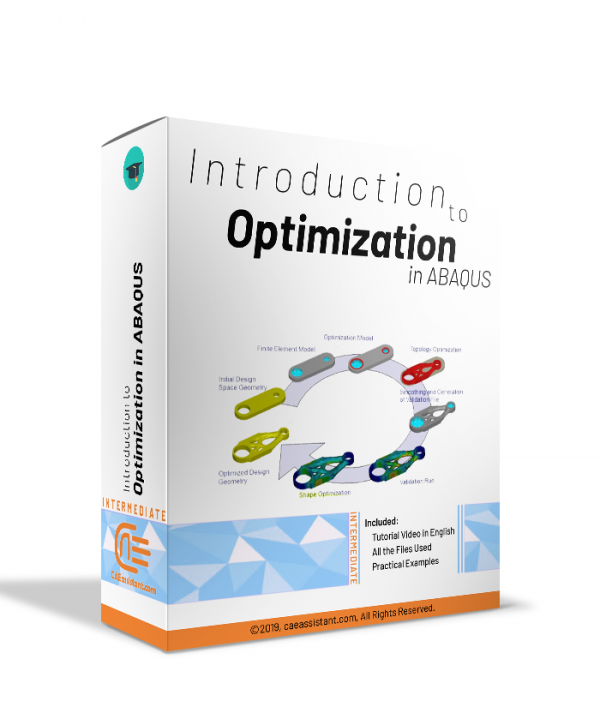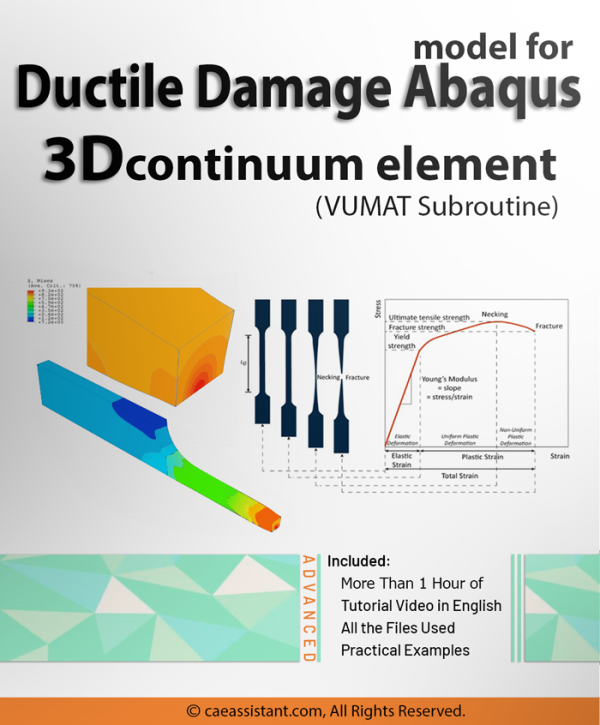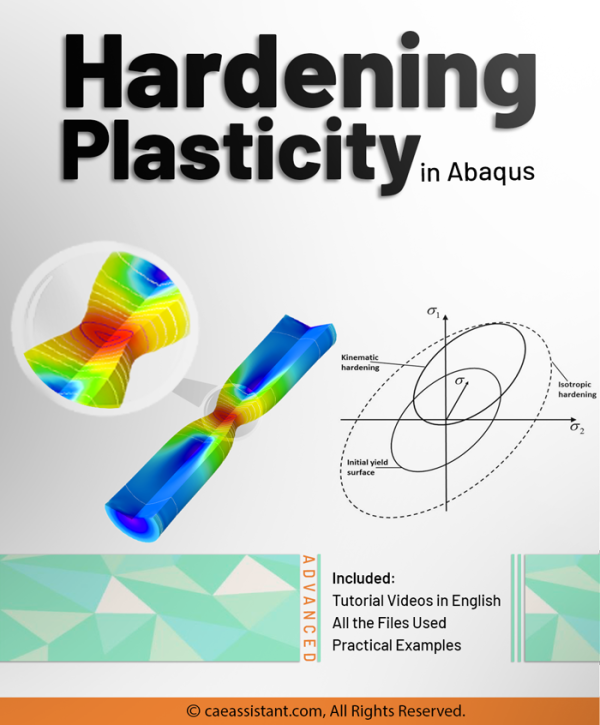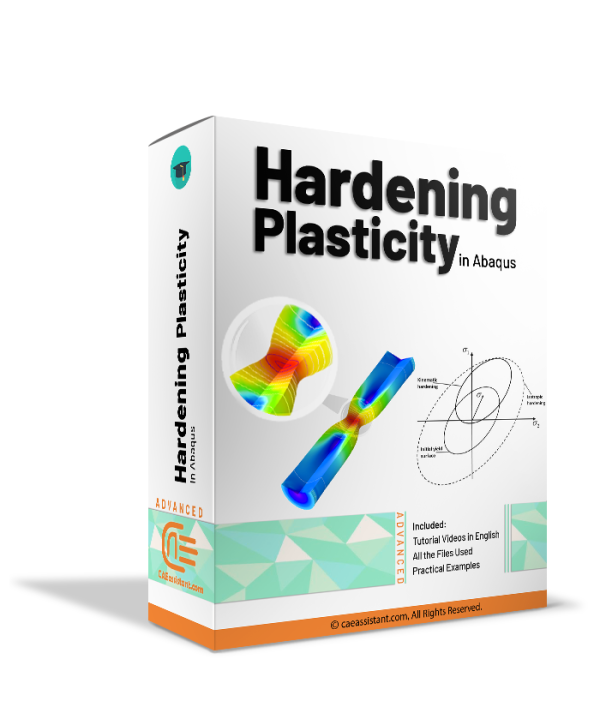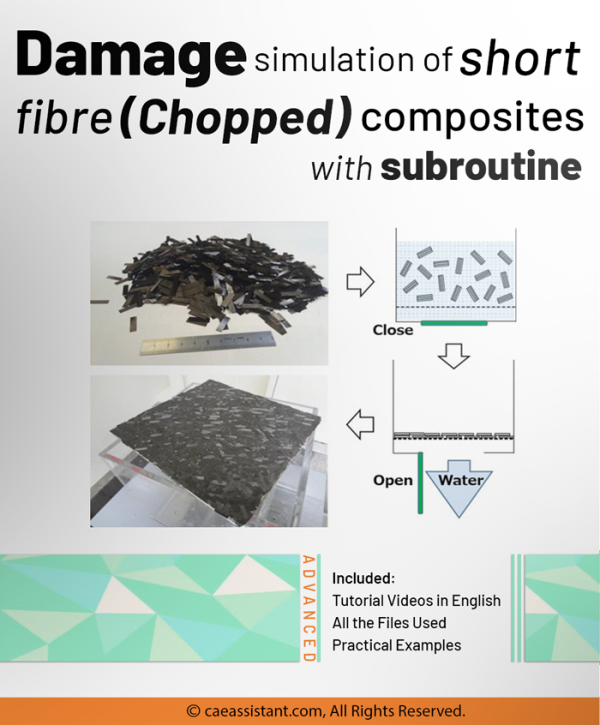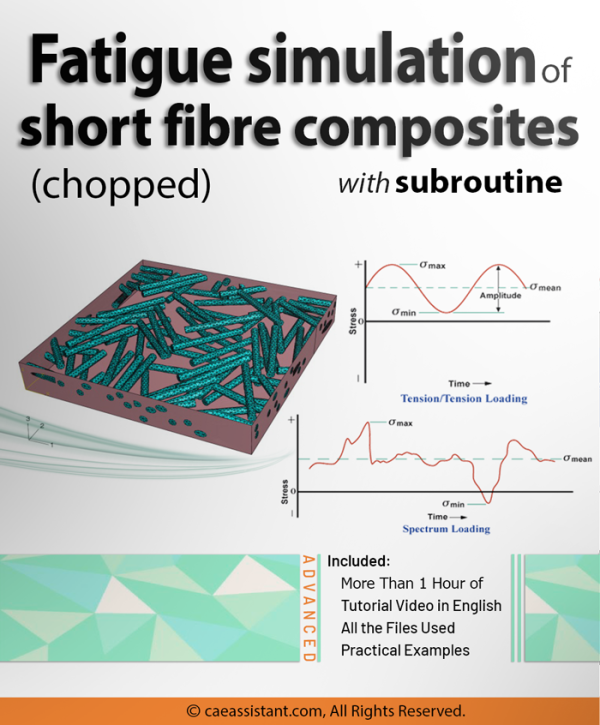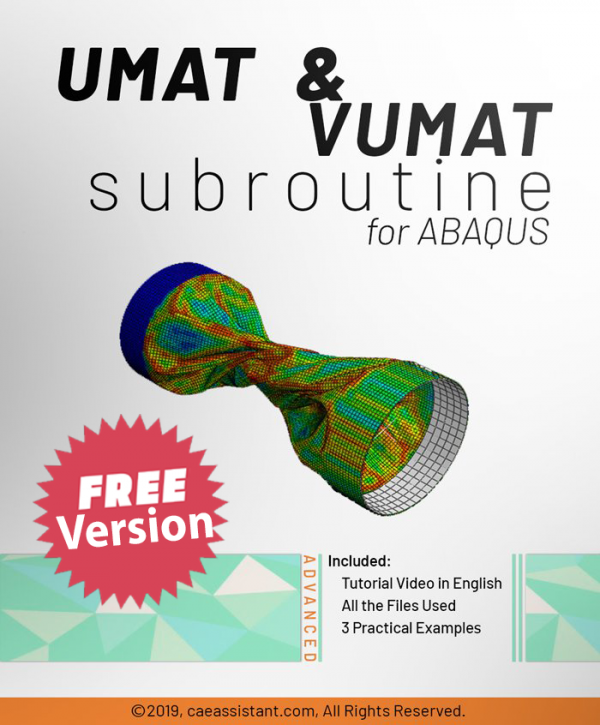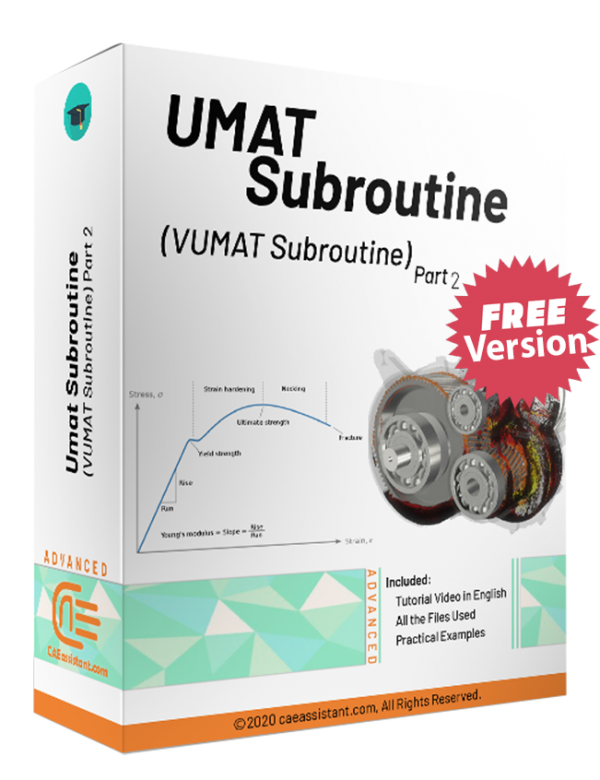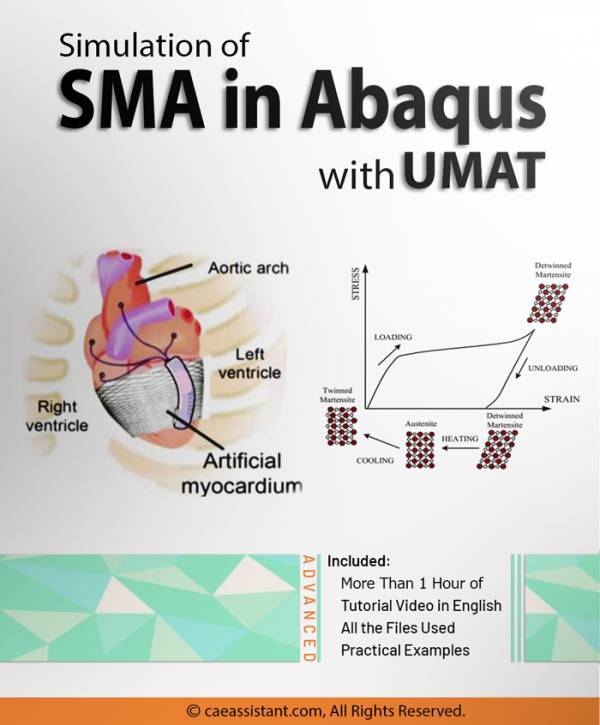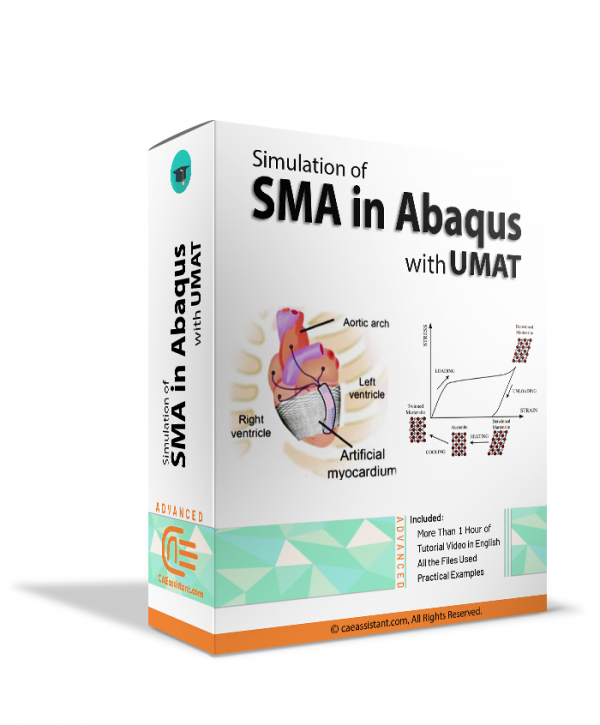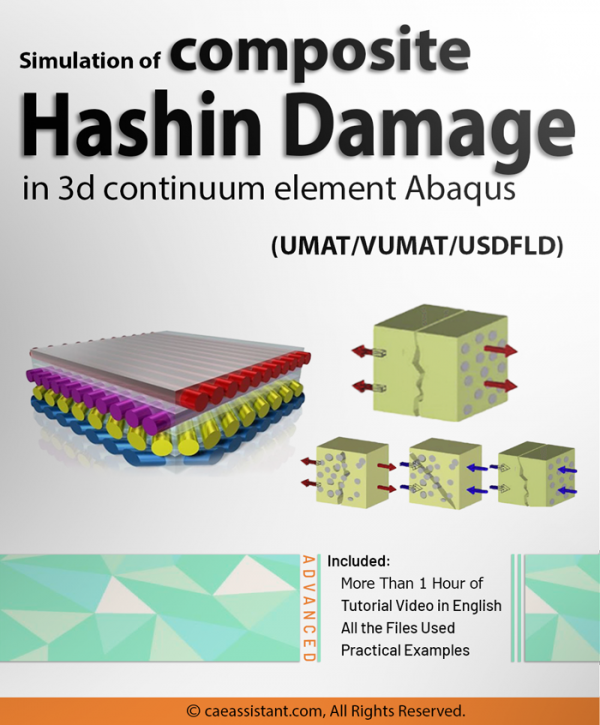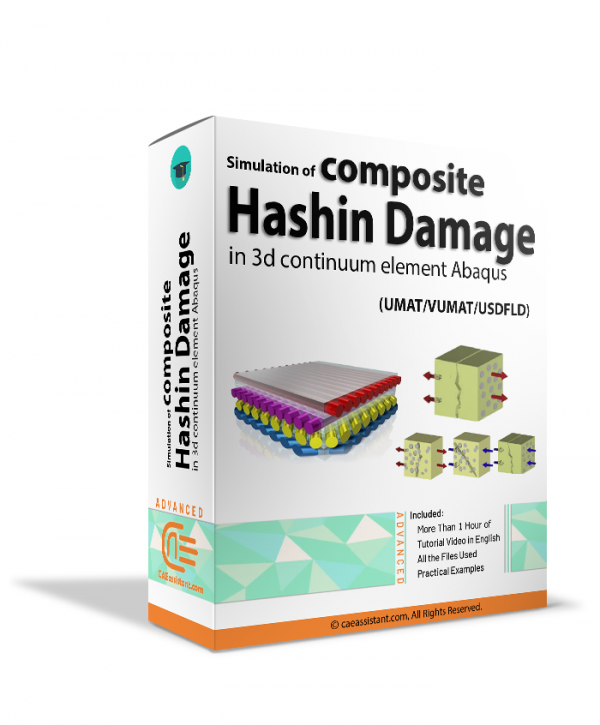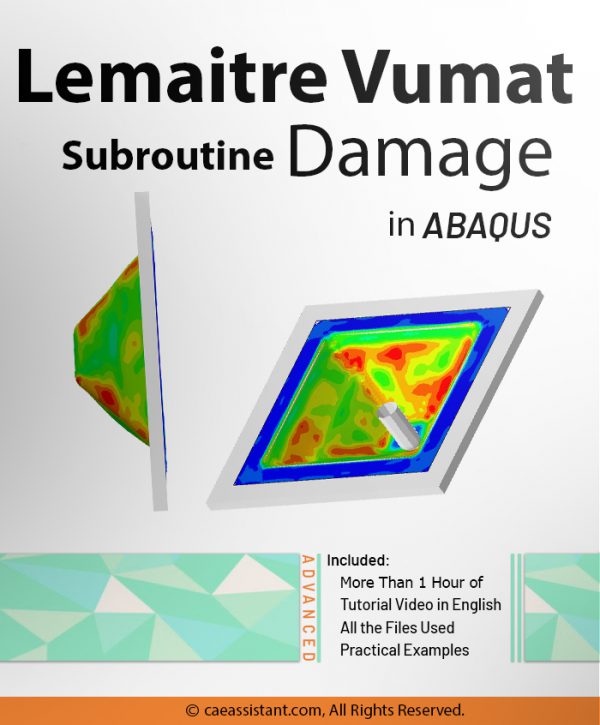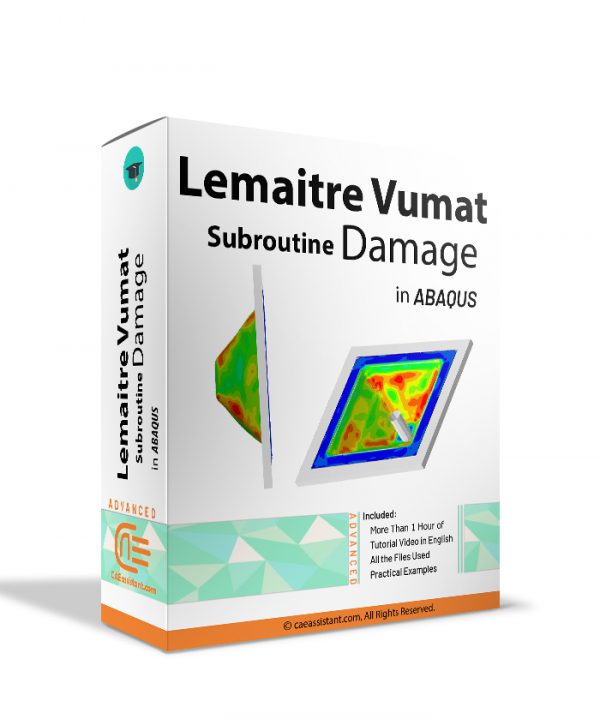Training Package
Airfoil simulation with different angles of Attack | Ansys fluent
Airfoils are a vital and important part of many industrial units. For example, in many kinds of rotary equipment such as gas turbines and wind turbines or compressors, airfoils play a vital role. Another usage of airfoils is in the aviation industry, which they used in airplane wings. The crucial parameters that are important in airfoils are the drag and lift forces or drag and lift coefficients. By using these parameters, we can design better airfoils to achieve greater lift coefficients and lesser drag coefficients. With this package, you learn how to design, mesh, and simulate an airfoil. Also, you learn how to link MATLAB to Ansys Fluent to change the geometrical constraints and boundary conditions automatically. You can use this method for your own optimization.
Short fiber composite damage (Mean Field Homogenization Model)
Short-fiber reinforced thermoplastics, popular due to their strength, lightness, and cost-effectiveness, are often manufactured using injection molding to create complex parts with dispersed short fibers. However, failure in these materials is complex, involving mechanisms like fiber cracking and plastic deformation. Current models for damage and failure are either macroscopic or simplified.
A new method tackles this challenge by evaluating stiffness using continuum damage mechanics with a multistep homogenization approach. This new method is called “Mean Field Homogenization”. This approach involves a two-stage process: first, the fibers are split into groups (grains). Then, mean-field homogenization is employed within Abaqus using a UMAT subroutine to average stiffness across these phases, followed by overall homogenization. This use of mean-field homogenization Abaqus simplifies the modeling of the composite's intricate geometry.
The method was validated through testing on a distal radius plate. Calibration was achieved through experiments, and the simulation was performed using Abaqus finite element software. It's important to note that the Abaqus short fiber damage mean field homogenization process was implemented within Abaqus through the INP code.
Tread wear simulation in Abaqus
This training package provides a comprehensive exploration of tire tread wear, focusing on its simulation using the UMESHMOTION subroutine in ABAQUS. Tread wear, the gradual erosion of a tire's outer rubber surface, impacts crucial performance aspects like traction and handling. The package elucidates the importance of tread wear simulation, emphasizing safety, performance optimization, regulatory compliance, durability, cost efficiency, environmental impact, and consumer confidence.
The UMESHMOTION subroutine, a key element in ABAQUS, is demystified through illustrative examples. Its application in modeling wear processes, specifically employing the Archard model, is highlighted—particularly in node movement specification during adaptive meshing.
The workshop within this package delves into simulating tire wear at a speed of 32 km/h over 1000 hours, utilizing the UMESHMOTION subroutine and Archard equations. The tire modeling process, transitioning from axisymmetric to three-dimensional elements, is detailed, considering both slip and non-slip modes of movement.
This resource serves as a valuable guide for professionals and enthusiasts seeking to understand and implement effective tread wear simulation techniques using advanced computational tools.
Hydroforming process simulation using VDLOAD subroutine in Abaqus
Dive into the intricacies of hydroforming simulation in Abaqus alongside the VDLOAD subroutine with our comprehensive guide. This tutorial delves into the essence of the Abaqus hydroforming simulation, unraveling the nuances of the hydroforming process simulation. Hydroforming, a specialized metal shaping technique applicable to diverse materials like steel, copper, and aluminum, is explored in depth.
In the workshop component, we specifically focus on advanced hydroforming simulation using the VDLOAD subroutine, highlighting its pivotal role in specifying fluid pressure on sheet metal forming. Learn how to apply the Functional Fluid Pressure Loading feature for precise control over fluid pressure dynamics. Additionally, explore the Smooth Amplitude option for defining part displacement seamlessly, without introducing dynamic changes during problem-solving.
Conclude your exploration with a comparative analysis of simulation outcomes, dissecting scenarios with and without fluid pressure using Abaqus hydroforming simulation. Engage in discussions on subroutine writing, delving into the intricacies of incorporating Fluid Pressure Loading into your simulations. This guide offers a natural progression through hydroforming and VDLOAD, providing valuable insights for efficient and accurate simulations.
Topology Optimization in Abaqus
Optimization is a fundamental concept used to enhance the effectiveness and efficiency of systems, designs, and decisions. It finds application in various domains, including industrial processes, finance, and communication networks. In engineering, optimization plays a crucial role in improving the design of systems and structures by maximizing performance and minimizing costs, weight, or other parameters. Structural optimization specifically focuses on designing or modifying structures to meet performance criteria while minimizing or maximizing objectives such as strength, weight, cost, or efficiency. The Abaqus software provides comprehensive structural optimization capabilities, including topology, shape, sizing, and bead optimization. This training package primarily focuses on topology optimization. Through the lessons and workshops, you will gain insights into the tips, tricks, and techniques for effectively utilizing topology optimization within the Abaqus software.
3D printing simulation with Laser Powder Bed Fusion (LPBF) method in Abaqus
3D printing is a process of creating three-dimensional objects by layering materials, such as plastic or metal, based on a digital design. 3D printing simulation involves using software to predict and optimize the printing process, allowing for more efficient and accurate production. This educational package includes two 3D printing modeling methods. The first method is based on the use of subroutines and Python scripting. After an introduction to the 3D printing process, the first method with all of its detail is explained; then, there would be two workshops for this method; the first workshop is for the 3D printing simulation of a gear with uniform cross-section and the second one is for a shaft with non-uniform cross-section. The second method uses a plug-in called AM Modeler. With this plug-in, the type of 3D printing can be selected, and after inserting the required inputs and applying some settings, the 3D printing simulation is done without any need for coding. Two main workshops will be taught to learn how to use this plug-in: "Sequential thermomechanical analysis of simple cube one-direction with LPBF 3D printing method using the trajectory-based method with AM plug-in" and "3D printing simulation with Fusion deposition modeling and Laser direct energy deposition method with AM plug-in".
3D printing simulation with Fused Deposition Modeling (FDM) in Abaqus
3D printing is the process of fabricating objects in three dimensions by adding layers of materials, such as plastic or metal, based on a digital design. Simulation for 3D printing involves the use of software to predict and optimize the printing process, enabling more efficient and precise production. This educational package includes a simulation specifically for 3D printing using Fused Deposition Modeling (FDM). The simulation employs a plug-in known as AM Modeler, which allows users to select the desired 3D printing method. By inputting the necessary parameters and adjusting settings, the 3D printing simulation can be performed without requiring any coding. A workshop will be conducted to teach participants how to utilize this plug-in effectively, focusing on "3D printing simulation with Fused Deposition Modeling and Laser Direct Energy Deposition method using the AM plug-in."
Curing process simulation in Abaqus
Fiber-reinforced composites have found widespread use across various fields due to their remarkable properties. This necessitates a careful design of their manufacturing processes to attain industrial application quality. The critical factor influencing their quality is the curing process, wherein the resin transforms into a solid state under temperature cycles. However, the challenge lies in achieving optimal curing quality while maintaining production efficiency. To overcome this challenge, an effective approach involves utilizing numerical simulations to optimize temperature cycles during curing. Nonetheless, creating such a model is complex as it must consider multiple factors concurrently, including temperature release from chemical reactions, shrinkage strains, and stress resulting from temperature variations, topics covered in this package. The package begins with an introduction to fiber-reinforced composites, exploring their advantages, applications, and categorization. It guides you through the fabrication process, detailing curing techniques and associated challenges. Furthermore, the package introduces constitutive equations for simulating the curing process and the necessary Abaqus subroutines for implementation. Additionally, two practical workshops are included to offer experience in modeling the curing process with Abaqus. These workshops enable you to evaluate internal heat generation and analyze strain and stress distributions. They not only provide guidance on simulation and subroutine implementation but also are provided for verification purposes.
Different Techniques for Meshing in Abaqus
This package introduces different meshing techniques in Abaqus. In finite element analysis, a mesh refers to the division of a physical domain into smaller, interconnected subdomains called elements. The purpose of meshing is to approximate the behavior of a continuous system by representing it as a collection of discrete elements. Meshing is of utmost importance in finite element analysis as it determines the accuracy and reliability of the numerical solution. Through this tutorial, initially, the mesh and related terms associated with meshing are declared. Abaqus mesh module and meshing process are introduced. Then, two different meshing methodologies: Top-down and Bottom-up with meshing techniques available for each one of them are completely explained. Some of the advanced meshing techniques and edit mesh toolset are also included. The consideration of mesh verification as the final step in the meshing process, along with its criteria, is undertaken. All the tips and theories determined in this tutorial are implemented in Abaqus/CAE as a workshop to mesh several parts. This package intends to take your ability to mesh different parts to a higher level.
Creep Analysis in Abaqus
In engineering, creep phenomenon refers to the gradual deformation or strain that occurs in a material over time when it is subjected to a constant load or stress (usually lower than yield stress) at high temperatures. It is a time-dependent process that can lead to the permanent deformation and failure of the material if not properly accounted for in design considerations. Creep analysis is vital in engineering to understand material behavior under sustained loads and high temperatures. It enables predicting deformation and potential damage, ensuring safe and reliable structures. Industries like power generation and aerospace benefit from considering creep for long-term safety and durability of components.
In this training package, you will learn about Creep phenomenon and its related matters; you will learn several methods to estimate the creep life of a system’s components, such as Larson-Miller; moreover, all Abaqus models for the creep simulation such as Time-Hardening law and Strain-Hardening law will be explained along with Creep subroutine; also, there would be practical examples to teach you how to do these simulations.
Abaqus Damage Model for Thermoplastic Polymers with UMAT Subroutine
Thermoplastic polymers are materials composed of long molecular chains primarily consisting of carbon. These polymers possess the unique ability to be shaped and molded under heat and pressure while retaining their stability once formed. This high formability makes them widely used in various industries, including furniture production, plumbing fixtures, automotive components, food packaging containers, and other consumer products. This package introduces a thermodynamically consistent damage model capable of accurately predicting failure in thermoplastic polymers. The implementation of this model is explained through the use of an ABAQUS user material (UMAT) subroutine.
The package is structured as follows. The introduction section Provides an overview of thermoplastic polymers and their mechanical properties. In the Theory section, the constitutive damage model and its formulation are reviewed. Then, an algorithm for numerically integrating the damage constitutive equations is presented in the Implementation section. In the UMAT Subroutine section, a detailed explanation of the flowchart and structure of the subroutine is provided. Finally, two simulation examples, namely the T-fitting burst pressure test and the D-Split test, are performed and the obtained results, are investigated.
Notice: Software files and A full PDF guideline (Problem description, theory, ...) are available; Videos are coming soon.
Simulation of shape control by piezoelectric in Abaqus
Piezoelectricity refers to the accumulation of electric charge in certain solid materials due to mechanical pressure. This phenomenon, known as the piezoelectric effect, is reversible. Some materials exhibit direct piezoelectricity, which involves the internal production of electric charge through the application of mechanical force, while others exhibit the inverse piezoelectric effect.
By harnessing piezoelectrics, it becomes possible to control the geometrical changes of objects in response to external forces. However, it is important to note that utilizing this property in all situations would not be cost-effective. Therefore, it is more practical to use piezoelectric structures selectively, specifically in special applications. One approach to determining the optimal placement of piezoelectric elements for controlling the geometric shape of various objects under internal or external forces involves utilizing the Abaqus and MATLAB software linkage. This software combination, along with optimization algorithms such as the particle swarm optimization algorithm, can be employed to achieve the desired objectives. By leveraging these tools and data, the primary goal of controlling object shape can be successfully accomplished.
In this training package, you will learn about piezoelectric and piezoelectric modeling in Abaqus, the particle swarm optimization algorithm, linking Abaqus and MATLAB, and how to use these tools for shape control.
Notice: Software files and A full PDF guideline (Problem description, theory, ...) are available; Videos are coming soon.
Techniques of simulating Large and Complex models in Abaqus
Sometimes, there is a need to simulate large or complex models in Abaqus, such as airplanes and cars. Generally, models with more than 5 million variables or take at least 12 hours to analyze are considered large. Processing such models requires a significant amount of time and energy, in addition to potential issues with modeling, loading, boundary conditions, and more. Therefore, it is necessary to find ways to simplify and accelerate the analysis of such models.
In this training package, you will learn various methods to address these challenges. Dealing with large models typically involves simplifying the model, making efficient use of system resources, and minimizing CPU time. These techniques are explained in detail here. Additionally, you will be taught various techniques to aid in the management of large models, including submodeling, history output filtering, restart functionality, and parts and assemblies.
Pre-Order Now
Coming soon...
Piezoelectric simulation in Abaqus
Piezoelectric materials exhibit a unique property known as piezoelectricity, where they can generate electric charges when subjected to mechanical stress or deformation, and conversely, deform when an electric field is applied. This phenomenon arises from their crystal structure, enabling the conversion of mechanical energy into electrical energy and vice versa.
Simulating piezoelectric materials is of great importance as it allows engineers to optimize the design and performance of devices and systems that utilize these materials. Through simulations, engineers can analyze factors like stress distribution, deformation, and electrical response, aiding in performance prediction and failure analysis. Simulations also enable the study of parameter sensitivity, understanding how changes in parameters impact piezoelectric devices. This information helps in making informed design decisions and optimizing the integration of piezoelectric components into larger systems. Furthermore, simulating piezoelectric materials reduces the need for physical prototypes, saving time and costs associated with experimental setups. It enhances the understanding and development of piezoelectric technology, facilitating its widespread application in various industries.
In this training package, you will learn what is a piezoelectric, types of piezoelectric, piezoelectric applications, and how to simulate piezoelectrics in Abaqus.
Pre-Order Now
Coming soon...
Modeling Functionally Graded Materials (FGMs) in ABAQUS
Dive into the realm of innovative engineering with our comprehensive tutorial package, designed to empower you in modeling Functionally Graded Materials (FGM) using the Abaqus USDFLD subroutine. Uncover the fascinating world of FGMs, materials that ingeniously vary their composition and microstructure, offering a nuanced control over mechanical, thermal, and other properties.
The workshop component takes you on an exploration of crack paths in Spherical Functionally Graded Materials, emphasizing simulation techniques using Abaqus Standard and the USDFLD subroutine. Uncover the secrets of stress distribution within a pressured, empty sphere, and enhance your skills by implementing the XFEM method for precise crack characterization. This training ensures you gain valuable insights into subroutine development, empowering materials engineers and designers to innovate and elevate the performance of structures across various industries. Embark on your journey to mastery with this all-encompassing tutorial package.
Optimization in ABAQUS
Notice: 2 hours of the package is available now; during 1-month after purchase, it will be completed.
Optimization is a process of finding the best solution to a problem within a set of constraints. It involves maximizing or minimizing an objective function while satisfying a set of constraints. Optimization in Abaqus involves the use of advanced algorithms and techniques to improve the design of structures and systems. Abaqus provides a range of optimization tools, including topology optimization, size optimization, and shape optimization. These tools help in improving the performance of structures by reducing their weight, increasing their stiffness, and minimizing their stress levels. In this package, all types of optimization, such as Topology, will be discussed; after each lesson, there will be workshops to help you to understand optimization with practical examples.
Ductile Damage Abaqus model for 3D continuum element (VUMAT Subroutine)
In this package, the continuum damage mechanics framework for ductile materials is implemented and developed in ABAQUS by VUMAT Subroutine.
Constitutive modeling is treated within the framework of continuum damage mechanics (CDM) and the effect of micro-crack closure, which may decrease the rate of damage growth under compression, is incorporated and implemented.
The present package has been organized as follows. In the Introduction section, the basis of the CDM in ductile materials is explained, and the applications of the CDM are stated. In the Theory section, the CDM model formulation is briefly reviewed, and with micro-crack closure, the effect is described. In the Implementation section, an algorithm for the numerical integration of the damage constitutive equations is presented. In the VUMAT Subroutine section, the flowchart of the subroutine, and the subroutine structure, step by step, are explained in detail. How to run the VUMAT Subroutine in ABAQUS will be presented in this section. In the Verification section, the validation and verification of the numerical implementation will be evaluated, and the stability, convergence and accuracy of the results will be investigated. In the Application section, the applications of using the ductile damage model in mechanical processes are presented, and the prediction of damage growth and failure in mechanical processes is investigated.
Hardening plasticity in Abaqus
In this package, hardening plasticity in the Abaqus software using Abaqus material models or UMAT subroutine or UHARD subroutine is discussed. It should be mentioned using a subroutine to define hardening could be more professional and this package tries to familiarize users with these subroutines for hardening definitions. So, if you want to write these subroutines for your customized project in the hardening plasticity field, I recommend you the "UMAT Subroutine (VUMAT Subroutine) introduction" and "UHARD Subroutine (VUHARD Subroutine) in ABAQUS".
Damage simulation of short fibre composites with subroutine
Short fiber composites consist of chopped fibers and a matrix, forming a discontinuous fiber-reinforced material, with fibers typically positioned either aligned or randomly within the matrix based on the intended application. In this training package, you will learn how to model the short fiber composite (SFC) damage in Abaqus based on this article: “Damage Modeling in Random Short Glass Fiber Reinforced Composites Including Permanent Strain and Unilateral Effect”. In the lesson one, you will learn the fundamentals such as the SFCs advantages, applications, and etc. Moving on to Lesson 2, the focus shifts to modeling Short Fiber Composites in Abaqus. The lesson introduces the critical decision between Macro and Micro modeling, which this package do a macro modeling. Lesson 3 advances the learning journey by exploring damage modeling in Short Fiber Composites, particularly through Dano's model. This macroscopic approach incorporates irreversible processes and internal variables, addressing anisotropic damage, unilateral effects, and residual effects. Lesson 4 bridges theory to practical application, guiding users on how to implement Dano's model in Abaqus through the VUSDFLD subroutine. The tutorial navigates through the subroutine's flowchart, explaining each line sequentially. Complementing the lessons are two workshops. Workshop 1 features a 2D composite plate with a hole using plane stress elements, offering a detailed breakdown of material properties, boundary conditions, and simulation procedures. Workshop 2, mirroring the first, employs shell elements, showcasing variations in element types while maintaining consistency with the utilization of the VUSDFLD subroutine.
Fatigue damage simulation of short fibre composites with subroutine
Fatigue failure in materials occurs when repetitive or fluctuating stresses, below the ultimate strength and often below the yield limit, lead to sudden and unpredictable failure, making it a significant concern in engineering due to its potential for catastrophic consequences. The reinforced part of the fiber-reinforced composites can be categorized as continuous or discontinuous, with the latter referred to as short fiber-reinforced composites. In this training package, the fatigue of short (chopped) fiber composites is explained. Two fatigue damage models are presented for short fiber composites: Nouri fatigue damage model and Avanzini fatigue damage model. The Nouri’s model is applicable for composites with orthotropic behavior. But the Avanzini’s model has considered the fiber distribution in the matrix to be homogeneous and random. It has assumed the material behavior to be isotropic. Also, Nouri's model was developed for strain-controlled test, but Avanzini's model was developed for stress-controlled test. In this tutorial, we use the Avanzini’s model, which is base on this article: “Fatigue behavior and cyclic damage of peek short fiber reinforced composites”. This article has implemented the USDFLD subroutine, but we use the UMAT subroutine, which is more accurate than USDFLD since the material strength and properties reduction is smooth. A standard test specimen is used in this simulation to model such behavior. You will learn the details in the package.
UMAT Subroutine (VUMAT Subroutine) in ABAQUS-Free Version- UMAT Abaqus example
This package includes the free version of the two following packages. The following packages include 11 workshops for writing different types of subroutines and give you instructions and points to write your own UMAT/VUMAT subroutine. Here, a UMAT Abaqus example is free to download.
"UMAT Subroutine (VUMAT Subroutine) introduction" is used when the material model is not available in ABAQUS software. If you follow this tutorial package, including standard and explicit solver, you will have the ability to write, debug and verify your subroutine based on customized material to use this in complex structures. These lectures are the introduction to writing advanced UMAT and VUMAT subroutines in hyperelastic Martials, Composites, and Metal, and so on. Watch Demo
"Advanced UMAT Subroutine (VUMAT Subroutine)" training package helps Abaqus users to prepare complex UMAT and VUMAT subroutines. This training package is suitable for those who are familiar with subroutine or want to learn UMAT/VUMAT subroutine Professionally. Equations for computational plasticity based on kinematic stiffness are also discussed. In addition, metal damage has been implemented based on Johnson Cook's model. Watch DemoSimulation of SMA in Abaqus with UMAT
Shape-memory alloys (SMAs) have the ability to recover their original shape, thanks to the shape-memory effect and superelasticity. These unique characteristics have led to the broad usage of SMAs in engineering and medical applications. Simulations offer cost-effective methods for analyzing SMAs’ behavior, ultimately enhancing their reliability and performance. Consequently, researchers frequently employ simulations to investigate SMA-based systems. This educational package begins by exploring the fundamentals of SMA wires, presenting their various types and specific capabilities. It then provides the necessary constitutive equations to describe the behavior of SMAs in simulation. The package includes a flowchart and a step-by-step guide for writing a subroutine to model SMAs in Abaqus. Users will also discover a workshop that uses Abaqus to simulate the superelasticity effect in SMA wires. This workshop not only offers guidance on the simulation and the implementation of the subroutine, but also compares the result with an analytical solution for verification.
Simulation of composite Hashin damage in 3d continuum element in Abaqus (UMAT-VUMAT-USDFLD)
In this training package, the 3D continuum HASHIN damage initiation model is prepared via three subroutines (USDFLD, UMAT and VUMAT).This training package teach you subroutines line-by-line. It should be noted that after damage initiation, failure occurs suddenly and in the form of a reduction in properties in the model. The HASHIN theory for this package is based on Kermanidis article titled” FINITE ELEMENT MODELING OF DAMAGE ACCUMULATION IN BOLTED COMPOSITE JOINTS UNDER INCREMENTAL TENSILE LOADING “.
Lemaitre Damage model implementation with VUMAT Abaqus
The Lemaitre damage model is now widely used to deal with coupled damage analyses for
various mechanical applications.
In this package, Firstly, we try to introduce the Lemaitre damage model, including damage mechanics and formulation of the Lemaitre damage model. Then, writing the Lemaitre subroutine is reached step by step. To do this job, the flowchart of the subroutine, Writing the subroutine line by line, implementation of the subroutine in one element and verification is done. In the last chapter, we implement this subroutine in a complex problem, the upsetting process.

